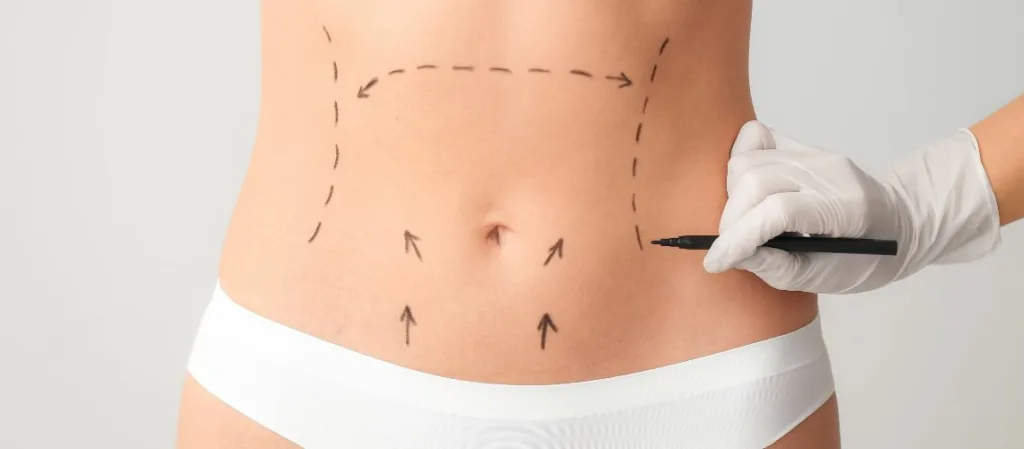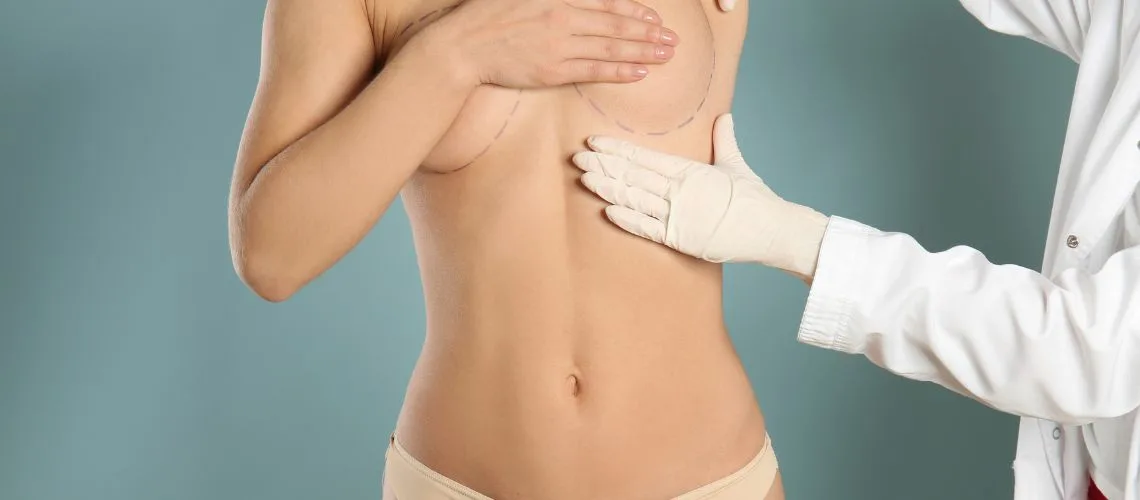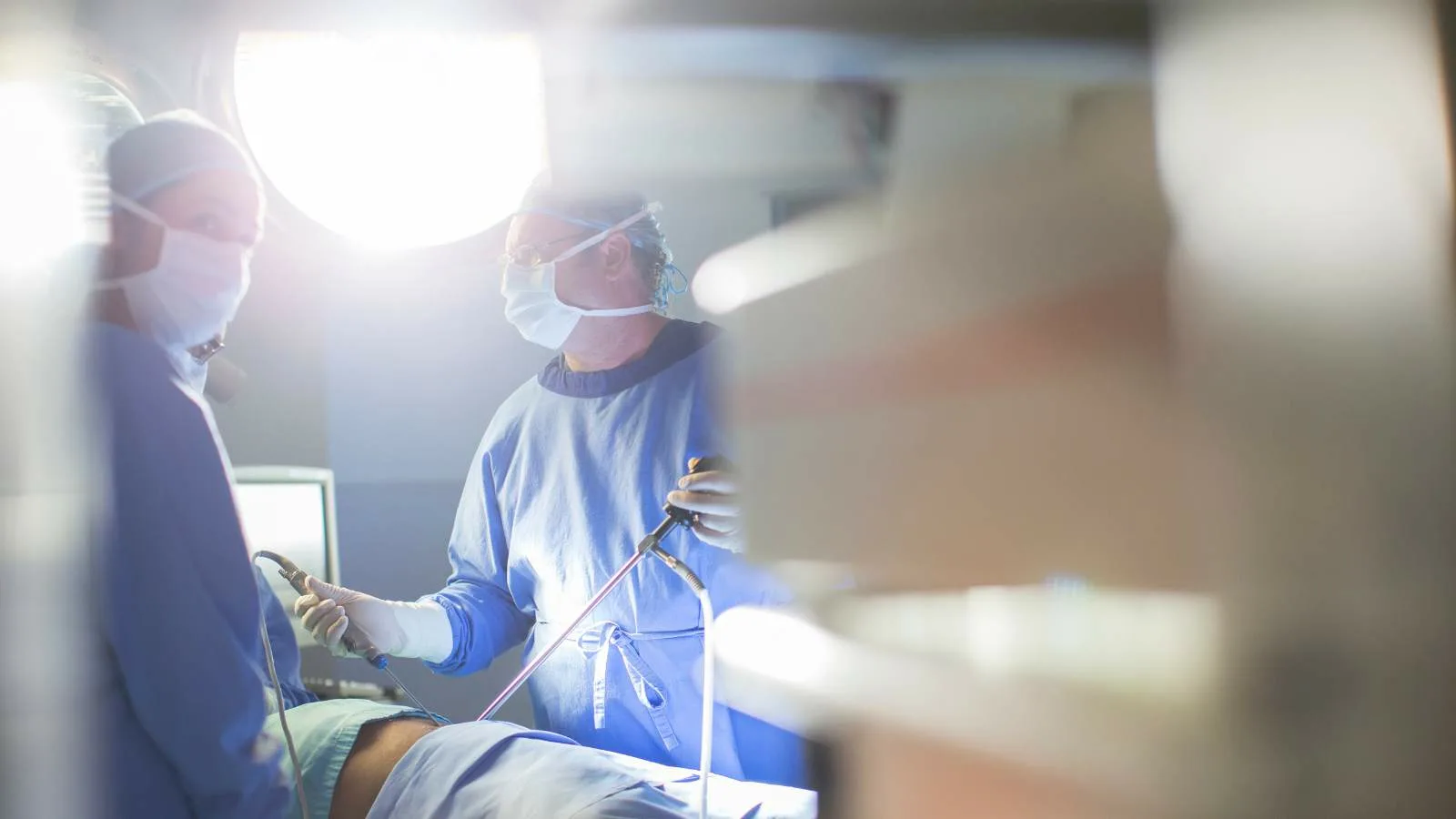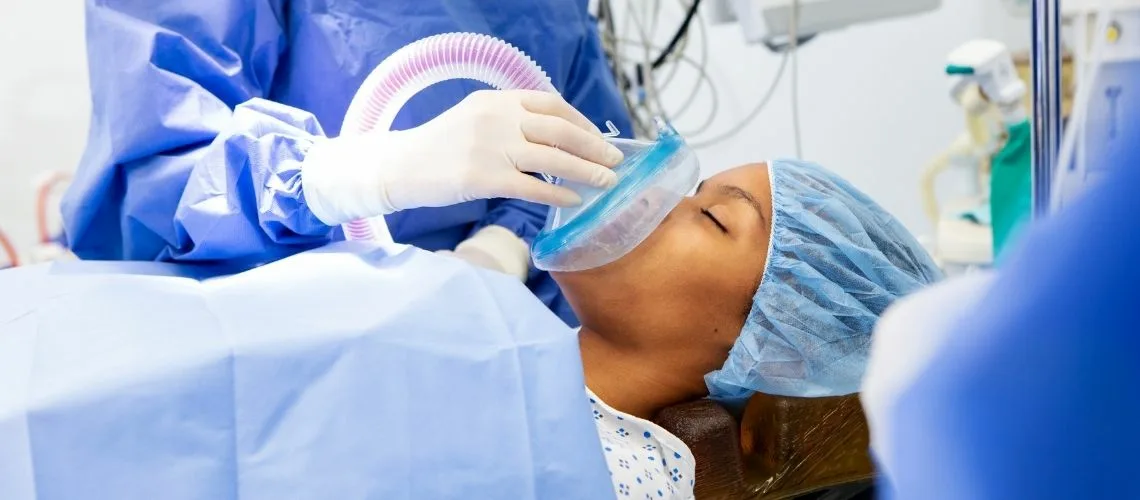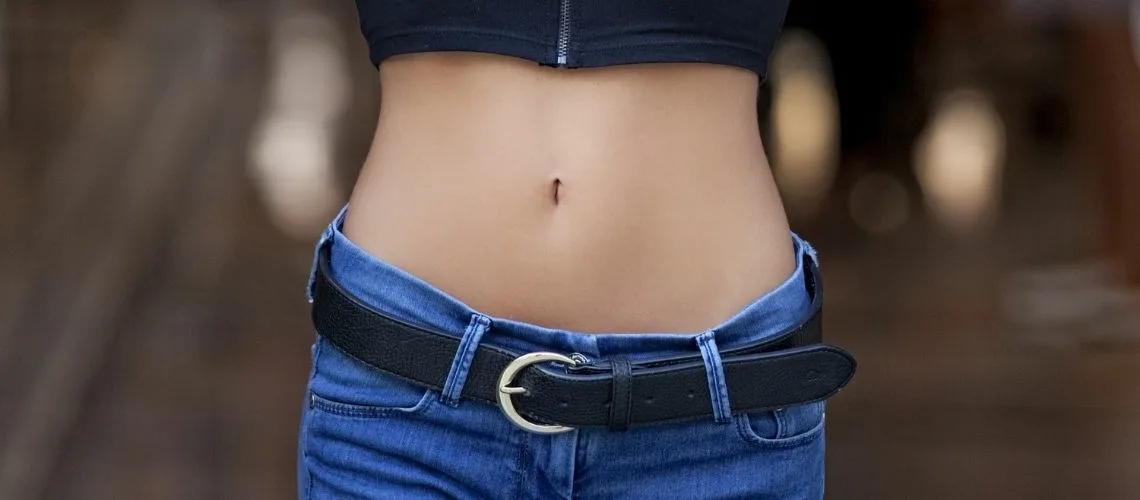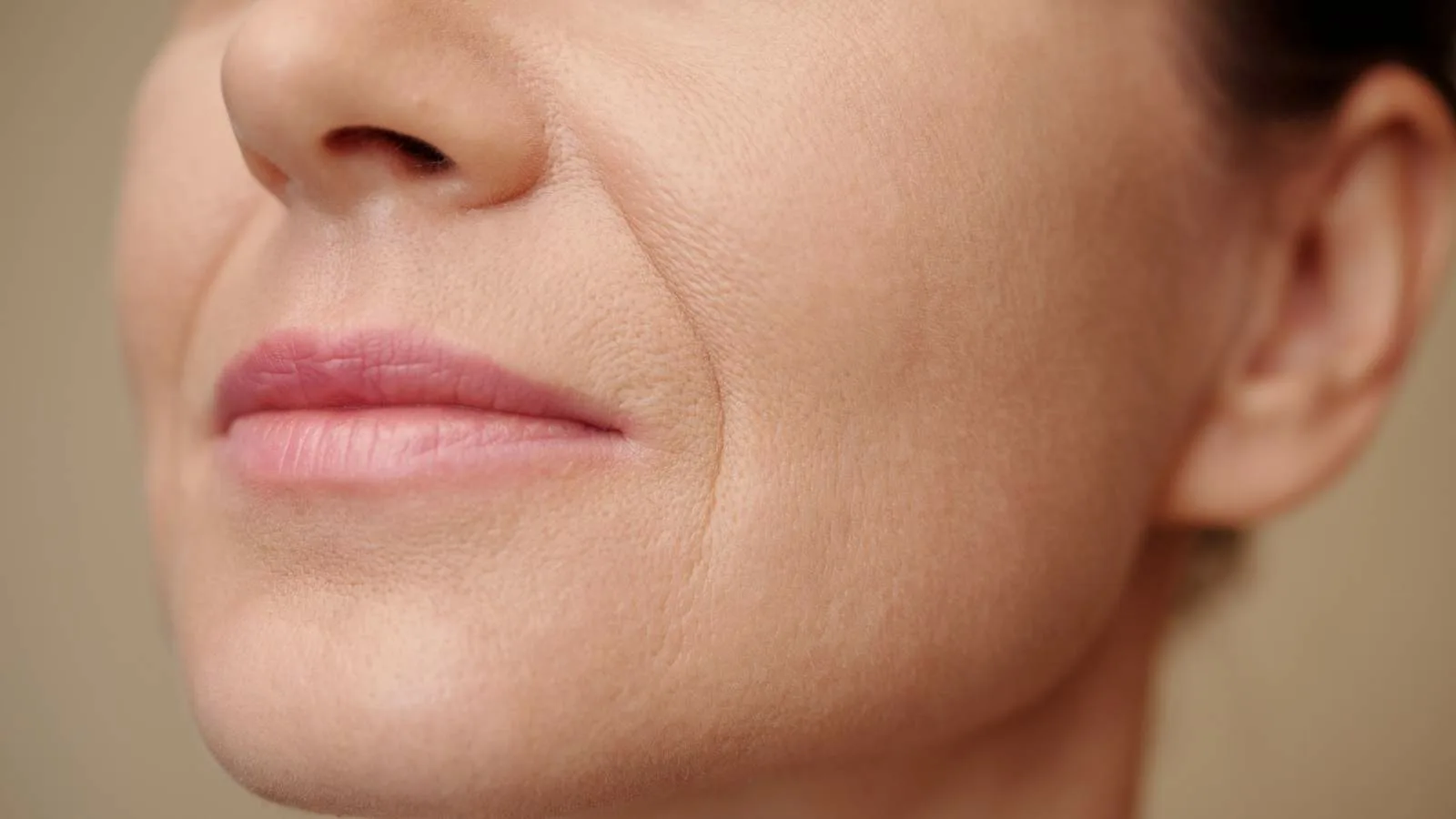Liposuction or tummy tuck are procedures addressing abdominal aesthetics but with different purposes. Liposuction removes stubborn fat deposits, while tummy tuck tightens abdominal muscles and removes excess skin for a firmer contour.
Liposuction is most suitable for patients with good skin elasticity and localized fat. It sculpts the body without correcting muscle separation or significant skin laxity, making it an option for mild contour improvements.
Tummy tuck is recommended for patients with abdominal muscle weakness, excess skin, or diastasis recti. This surgery restores a flat and firm abdomen by repairing deeper structures and removing sagging tissues.
Choosing between liposuction and tummy tuck requires professional evaluation. Age, skin quality, medical history, and patient expectations determine whether fat removal, muscle tightening, or a combined approach is most appropriate.
What is Liposuction and How is it Performed?
Liposuction, as its name suggests, is a surgical method used to remove unwanted fat deposits by vacuum aspiration. The term literally means “fat suction,” and it targets fat deposits in specific areas of the body – such as the abdomen, hips, love handles, arms, or inner thighs. Stubborn fat can be resistant to diet and exercise. Even if a person spends hours at the gym and pays attention to their diet, some areas unfortunately do not slim down enough. Liposuction comes into play precisely at this point.
You can imagine it like a sculptor shaping marble with a chisel. The goal is to remove excess fat to achieve more aesthetic body contours. Many people think of liposuction as a “weight loss method.” This is a major misconception. Liposuction is essentially a body contouring and contour-correcting procedure. In other words, it is not about overall weight loss but about getting rid of excess fat in certain areas.
During the operation, small incisions are made in the targeted areas, and with the help of thin cannulas, the excess fat tissue is removed using a vacuum-like system. There are different liposuction techniques; tumescent liposuction, ultrasonic liposuction (VASER), or laser liposuction, each intervening in the subcutaneous fat tissue in various ways. But the basic principle remains the same: removing excess fat and achieving a smoother contour.
What is a Tummy Tuck (Abdominoplasty) and Why is it Done?
Tummy tuck, medically known as “abdominoplasty,” is a comprehensive surgical procedure aimed at removing excess skin and fat in the middle and lower abdominal regions, while also repairing loosened abdominal muscles. You can think of it like repairing the stitches under an old, saggy shirt to make it fit better and look smoother.
A tummy tuck is especially preferred by people who have lost a lot of weight or have had sagging and looseness in the abdomen after pregnancy. During pregnancy, the abdominal muscles can stretch significantly, and in some women, a muscle separation called “diastasis recti” occurs. This can cause a significant deformity. If you have extra skin on your abdomen, if your muscles are lax, and simpler methods like liposuction are insufficient to correct that looseness, abdominoplasty becomes the most effective solution.
In a tummy tuck operation, a horizontal incision is usually made below the navel. Loose skin and excess fat are removed, the abdominal muscles are tightened, and then the skin is re-draped for a tighter appearance. If there is a major sagging around the level of the navel, the position of the navel may be readjusted as well. This creates a tighter, firmer, and flatter abdominal profile.
Who Should Opt for Liposuction?
Liposuction is extremely suitable for those who have largely maintained weight control, do not have a very high body mass index, but complain about fat in specific areas. For instance, someone who generally wears size M or L but cannot achieve the desired silhouette due to excessive fat in the hips or belly area may benefit significantly from liposuction. If a person is generally satisfied with their body but has persistently fatty “pockets” or “handles,” liposuction targets exactly those areas.
To use an analogy, you can think of the human body as a forest. Even if everything is fine in general, in some corners the trees are too dense. Liposuction aims to thin out these “densely packed” areas. After the excess fat is removed, the remaining tissues take on a more aesthetic form.
Another important point is that the person undergoing liposuction should have sufficient skin elasticity. In individuals with good skin elasticity, the skin contracts more easily after liposuction and provides a smoother surface. If skin elasticity is poor, noticeable sagging may occur after liposuction. In such cases, additional interventions or other operations, such as a tummy tuck, may be necessary.
When is a Tummy Tuck More Suitable?
Unlike liposuction, a tummy tuck also addresses the abdominal muscles. It is preferred in individuals who have lost a lot of weight or had multiple pregnancies, causing sagging skin and loose muscle structure in the abdominal area. Even if a person returns to their former weight, the loss of skin elasticity and the separation between the abdominal muscles can make the sagging permanent. In that case, removing only the fat (liposuction) may not solve the problem; on the contrary, it may even make the looseness and sagging in the abdominal area more pronounced.
The main goal of a tummy tuck can be summarized as “excess skin and fat + repair of loose abdominal muscles.” Therefore, even if there is some subcutaneous fat tissue, if the main complaint is severe sagging and muscle looseness, abdominoplasty is chosen. For example, if there is a noticeable separation between the abdominal muscles (diastasis recti) after multiple pregnancies, this can cause the belly to protrude and sometimes lead to back pain. This muscle separation is corrected during a tummy tuck operation, forming a fitter abdominal wall.
What Are the Differences Between Liposuction and a Tummy Tuck?
- Scope of the surgery
Liposuction: Focuses solely on removing excess fat tissue. If the skin quality is good and there is no muscle laxity, it may be enough.
Tummy Tuck: Removes excess fat as well as excess skin and addresses looseness in the abdominal muscles.
- Recovery Process
Liposuction: Involves smaller incisions, so the recovery is generally faster. Most people can return to light daily activities within a few days.
Tummy Tuck: A more extensive surgical intervention. Recovery takes a bit longer, and extra precautions are needed in the first weeks, such as bending forward to walk or avoiding heavy lifting.
- Scars
Liposuction: Has small incisions, so scarring is minimal and fades over time.
Tummy Tuck: Usually involves a horizontal incision extending between the hip bones and sometimes around the navel. These scars remain hidden under swimsuits or underwear but do not completely disappear.
- Expectations and Results
Liposuction: Improves body contours and slims you down, but if there is loose skin, it won’t correct that.
Tummy Tuck: Provides a fully flattened abdomen, correcting problems like skin sagging and muscle separation.
Is Liposuction a Weight Loss Method?
No. Liposuction is a “body contouring” method, not a “weight loss” method. The biggest distinction here is that the amount of fat removed during liposuction is not equivalent to losing weight. Suppose a person weighs 70 kilograms, is 1.65 meters tall, and is generally satisfied with their body, but is bothered by a few extra kilos around the abdomen. After liposuction, maybe 2-3 liters of fat are removed. This may not make a huge difference on the scale, but there will be a visible reduction in the waist and abdominal area. When you look in the mirror, you notice a difference, but the weight on the scale might only drop by a few kilos.
Moreover, if you do not change your lifestyle after liposuction—i.e., if you do not adopt a healthy diet and regular exercise habits—you can gain fat again, possibly in different areas. Therefore, liposuction is generally recommended for people who already exercise regularly but have trouble with localized fat deposits. If someone has a general weight problem, it is more logical to lose weight first with diet and exercise or, if necessary, consider different methods.
Will the Abdomen Always Stay Flat After a Tummy Tuck?
A tummy tuck removes excess skin and fat and tightens the muscles to provide a near-perfect abdominal shape. However, even after this operation, it is important to maintain healthy lifestyle habits to ensure permanent results. Otherwise, if you gain weight again or become pregnant again, you may experience looseness, widening, and sometimes sagging in the abdominal area once more.
To use an analogy, if you have taken in the waist of an old pair of pants to fit you perfectly, if you gain weight, those pants will become tight again. After a tummy tuck, regular exercise, balanced nutrition, and maintaining your ideal weight will help keep the results for a long time.
Can Liposuction and Tummy Tuck Be Done at the Same Time?
Many people wonder if both procedures can be done simultaneously. Known as “lipoabdominoplasty,” this combination is possible when surgical technique and proper patient selection are ensured. If a person has both localized fat deposits and skin sagging plus muscle looseness, surgeons may prefer to combine both procedures in a single session. The advantage is that you benefit from both a tummy tuck and liposuction with one recovery period.
Of course, the risks and recovery involved may be more extensive. The surgeon will decide on the best approach based on the patient’s overall health and expectations. In some patients, liposuction is done first, followed by a tummy tuck months later, or vice versa. It depends entirely on the individual’s needs. Extending the operating time and intervening in more tissues can make healing a bit more complicated. However, with proper planning and a careful surgical team, extremely successful results can be achieved.
What Kind of Preparation Should Be Done Before Surgery?
- General Health Assessment
It is important that any chronic conditions (such as diabetes, heart disease, hypertension, etc.) are under control and that there are no issues preventing anesthesia. The physician usually assesses overall health status through blood tests, an electrocardiogram (ECG), and similar evaluations.
- Smoking and Alcohol Use
Smoking reduces blood supply to tissues, negatively impacting the healing process. It is recommended to quit smoking for a certain period before and after surgery. Alcohol similarly can cause bleeding and healing problems, so its use should be controlled.
- Weight and Nutrition
Entering the operation at as close to your ideal weight as possible helps ensure more successful and lasting results. Individuals who are overweight are advised to lose weight through diet and exercise before undergoing liposuction or a tummy tuck.
In your nutritional plan, having foods rich in protein, vitamins, and minerals helps support tissue repair after the operation.
- Medical Preparation
Before surgery, your doctor will tell you which medications to take or stop taking. Blood thinners or herbal supplements (such as green tea extract) can increase bleeding, so be sure to consult your doctor.
- Home and Work Arrangements
You will need some rest after surgery, so it is wise to plan for help at home for basic needs or to arrange a leave of absence at work. Especially in the first few days after a tummy tuck, the area is more sensitive; sitting, standing, or making sudden movements can be challenging. Therefore, it is important to prepare a suitable recovery environment in advance.
Anesthesia and Operation Time for Liposuction and Tummy Tuck
Liposuction can be performed under sedation or general anesthesia. For small areas, sometimes local anesthesia plus sedation is preferred. The operation time varies between 1-3 hours, depending on the number of areas to be treated and the amount of fat to be removed.
A tummy tuck is usually performed under general anesthesia. Because it involves comprehensive intervention in the abdominal wall, it is generally not preferred to do it awake or just with sedation. The procedure takes about 2-4 hours, possibly longer if a more extensive correction is needed.
If both liposuction and a tummy tuck are performed, the operation time may be extended further. Since the goal is to do everything in the most accurate way, there should be no rush in terms of time.
Postoperative Recovery Period and Points to Consider
- Pain and Discomfort
The pain after liposuction is usually mild to moderate and can be managed with pain relievers.
After a tummy tuck, there may be a bit more noticeable pain and tightness for the first few days because the abdominal muscles have been tightened.
- Use of Compression Garments and Bandages
After both liposuction and a tummy tuck, special medical compression garments are usually used. These garments help the body adapt to its new shape and speed up the reduction of swelling. They also protect the surgical site against external impacts and assist with comfortable movement.
- Balance of Activity and Rest
Complete bed rest is not necessary; light walking is often recommended. Staying immobile for a long time can negatively affect circulation and increase the risk of blood clots in the legs. Short walks and leg exercises can be beneficial.
- Nutrition and Fluid Intake
During recovery, the body needs plenty of protein, vitamins, and minerals. Drinking enough water is important to reduce swelling and improve circulation. Reducing salt intake can help swelling to go down faster.
- Stitches and Wound Care
In a tummy tuck operation, the incision line is longer, and you may need regular dressing changes. Taking proper care of your stitches and following your doctor’s instructions for dressing changes will help reduce the risk of infection and wound healing problems.
- Returning to Work and Social Life
Those who undergo liposuction usually return to work and normal social activities sooner. After a tummy tuck, this period is somewhat longer. For heavy exercise and weightlifting, it is generally recommended to wait at least 4-6 weeks.
Expected Results After Liposuction and Tummy Tuck
- Liposuction Results: Especially in areas like the waist, hips, and the sides of the abdomen, there is a noticeable slimming and reshaping. In cases of good skin elasticity, a smooth and fit appearance can be achieved. However, if there is a large amount of excess skin, liposuction alone will not fix the sagging.
- Tummy Tuck Results: Provides a flatter, tighter, and smoother abdominal appearance. Excess skin and stretch marks around the navel can be largely removed. Stretch marks above the navel may not disappear completely, but they can be reduced in appearance due to the tighter skin. Since the muscles are repaired, sometimes the waist area also appears slimmer.
It can take between 3 to 6 months, sometimes up to a year, for the body to take its final shape and for all swelling to disappear. Patience, healthy eating, and following your doctor’s advice will help ensure lasting and satisfying results.
Risks and Possible Complications
Like any surgical procedure, liposuction and tummy tuck operations have certain risks. Most can be minimized by careful surgical follow-up and patients adhering to recommendations. Nevertheless, it is helpful to be aware of them:
- Infection: After surgery, it is extremely important to follow hygiene and wound care guidelines.
- Bleeding or Hematoma: Although rare, blood can accumulate in the surgical area. If addressed early, it usually does not cause serious problems.
- Seroma: Known as fluid accumulation under the skin, this can occur especially after a tummy tuck. Your doctor can remove the fluid with a syringe if necessary.
- Anesthesia-Related Risks: Complications related to the heart, lungs, or other systems can occur in these operations just like in any other surgery.
- Stitch Problems and Wound Healing Issues: Especially in patients who smoke or have circulation problems, wound healing can be delayed, and scars may remain more noticeable.
- Sensory Changes: After a tummy tuck, there may be temporary numbness in the incision area or around the navel. Liposuction sites can also rarely experience nerve damage, but in most cases, sensation returns over time.
Which Option is More Costly?
Liposuction is generally less expensive compared to a tummy tuck, as the scope of the procedure is smaller (no removal of skin, no muscle repair, etc.). A tummy tuck tends to be more expensive because it often requires a longer surgical time, higher anesthesia costs, and more comprehensive hospital services and materials. However, it is difficult to give exact numbers since many factors—such as the details of the procedure, operating time, technique used, and the hospital’s location—come into play. When deciding on surgery, it is more important to prioritize the desired outcome and health rather than focusing solely on cost.
How to Maintain Tummy Tuck and Liposuction Results
Maintaining the aesthetic appearance achieved by these surgeries largely depends on the patient’s lifestyle. Regular exercise, a balanced diet, adequate sleep, and stress management all help prolong the longevity of the surgery. Excessive weight gain, constant poor eating habits, or a sedentary lifestyle can make the body prone to accumulating fat and sagging again.
Another important point is the possibility of pregnancy. It is possible to become pregnant after a tummy tuck; however, because the abdominal wall will be stretched again, the results of the surgery may be partially lost. Therefore, abdominoplasty is typically more suitable for women who have completed their plans for children or are certain about not having any more children.
The Importance of Surgeon Selection and the Consultation Process
Both liposuction and tummy tuck operations should be performed by experienced and specialized surgeons. The surgeon’s knowledge, aesthetic perspective, and surgical skill are critical to the success of the results. Therefore, it is recommended to consult several different surgeons during the decision-making process, thoroughly explain your expectations, and create a personalized plan.
Do not hesitate to ask questions during the consultation. “Is this operation right for me?”, “How many days will I need to stay in the hospital?”, “How long until I can return to my daily life?”—questions like these reduce uncertainties. Also, reviewing before-and-after photos of patients with similar body types can help you understand possible outcomes more clearly.
Psychological Preparation in Aesthetic Surgery: Expectations and Reality
Aesthetic operations must be evaluated not only physically, but also emotionally and psychologically. A person considering liposuction or a tummy tuck should know that “not everything will miraculously change overnight” and start out with realistic expectations. Surgery can increase one’s self-confidence and positively affect social life, but it is not the sole source of happiness.
It is crucial for the patient to prepare themselves emotionally and receive support from family or close friends. Some patients believe that physical change will solve all their problems. However, the scope of a surgery is limited. Therefore, many plastic surgeons find it beneficial for patients to receive psychological support before and after the operation.
Why is the Navel Reshaped During a Tummy Tuck?
During abdominoplasty, when removing excess skin, you may also need to reposition the navel to an anatomically ideal location. Because once the excess saggy skin is removed, the existing navel position may not look natural. The navel is an important “cosmetic focal point” in the abdomen. If it is not repositioned, it could end up too high or too low, negatively affecting the outcome of the surgery. Surgeons usually reposition the navel in a way that looks natural.
Skin Elasticity and Stretch Marks: Which is More Effective?
If skin elasticity is low, liposuction alone may not achieve the desired aesthetic result. The saggy skin may not adapt to the slimmer area and could fold like a deflated balloon. A tummy tuck thoroughly resolves this by removing the excess skin.
Stretch marks, however, cannot be completely erased; yet stretch marks below the navel can often be removed along with the excess skin during abdominoplasty. Stretch marks above the navel generally remain, though the tighter skin may make them appear less noticeable.
How Soon Can You Exercise After Surgery?
- After Liposuction: Light walking can generally begin a few days after surgery. More intense exercise is usually recommended after 3-4 weeks. This timeframe depends on how much liposuction was performed and how quickly the individual recovers.
- After a Tummy Tuck: The first week generally involves rest and very light, controlled movement. Since the abdominal muscles have been repaired, it is advisable to wait 4-6 weeks before resuming vigorous exercise. Your doctor will provide a detailed plan about when you can start different types of activity.
Tummy Tuck or Mini Tummy Tuck?
In some patients, laxity and sagging are concentrated only in the lower abdomen below the navel. In this case, a procedure known as a “mini tummy tuck,” which uses a shorter incision, may be an option. A mini abdominoplasty is not as comprehensive as a full tummy tuck and is recommended for patients with less excess skin and muscle laxity. While the scar is shorter after a mini tummy tuck, the degree of flattening and tightening is also more limited compared to a full tummy tuck. Which method is appropriate becomes clear after a physical examination.
Is Age a Significant Factor?
There is no strict age limit for either liposuction or a tummy tuck. The patient’s overall health is more important. Well-controlled chronic diseases, good cardiovascular health, and a positive psychological state increase the likelihood of success. However, skin elasticity decreases as age advances, which may make it harder for the skin to contract after liposuction. Thus, in some older patients, a tummy tuck or a combined procedure may yield better results.
Do Fat Cells Reappear? Is Liposuction Permanent?
The number of fat cells in the body is largely set after adolescence and does not increase significantly afterward. Fat cells removed by liposuction do not come back. However, the existing fat cells can grow in size. So, if you start consuming too many calories after liposuction, you may see fat accumulate again in other regions or partially in the same region. Hence, the idea “after the surgery, fat will never come back” is incorrect. Healthy eating and regular exercise support the permanence of liposuction results.
Which Path is Right for Abdominal Aesthetics?
For those seeking a flat and firm abdomen, liposuction and tummy tuck surgeries offer effective solutions to different needs. Liposuction targets individuals with tight skin and only localized excess fat, while a tummy tuck provides a more lasting and comprehensive solution for those with both skin and muscle laxity. Healthy eating, regular exercise, and weight control are the main factors that ensure the long-term success of both procedures.
Often, a person may not be able to fully determine on their own which surgery is necessary. In this case, consulting an experienced aesthetic surgeon is the most reliable method. During the examination, the individual’s needs, expectations, and body structure are assessed, and a personalized plan is created. If needed, the two operations can be performed in a combined manner. The important thing is to adopt the right approach at the right time, tailored to the needs of the person.
Every surgery is personal, and everyone’s recovery progresses differently. Following the advice given before and after surgery increases the success of the operation and patient satisfaction. Taking good care of yourself and preserving the results is a lifetime habit. It should not be forgotten that making this decision while prioritizing a healthy and happy life—beyond mere aesthetics—is paramount. After all, our body is one of the most important reflections of our quality of life.
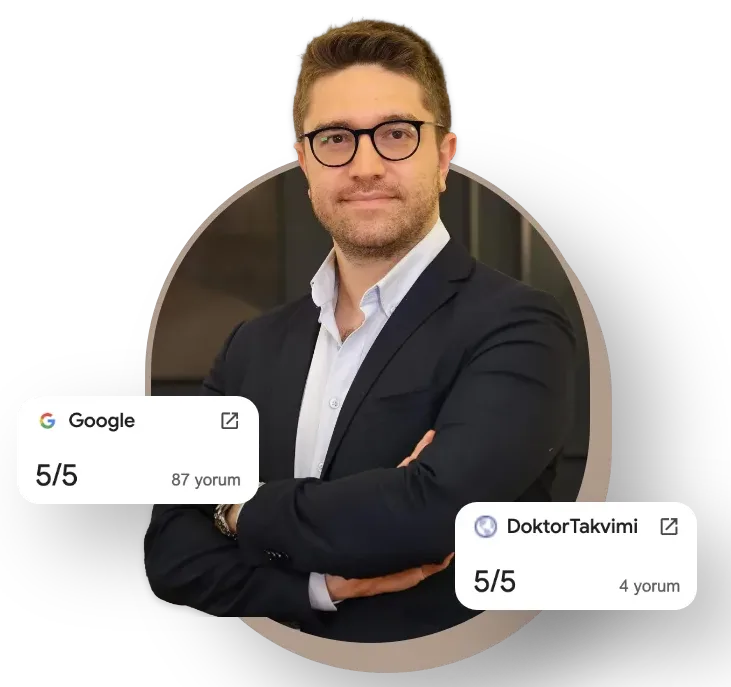
Op. Dr. Erman Ak is an internationally experienced specialist known for facial, breast, and body contouring surgeries in the field of aesthetic surgery. With his natural result–oriented surgical philosophy, modern techniques, and artistic vision, he is among the leading names in aesthetic surgery in Türkiye. A graduate of Hacettepe University Faculty of Medicine, Dr. Ak completed his residency at the Istanbul University Çapa Faculty of Medicine, Department of Plastic, Reconstructive and Aesthetic Surgery.
During his training, he received advanced microsurgery education from Prof. Dr. Fu Chan Wei at the Taiwan Chang Gung Memorial Hospital and was awarded the European Aesthetic Plastic Surgery Qualification by the European Board of Plastic Surgery (EBOPRAS). He also conducted advanced studies on facial and breast aesthetics as an ISAPS fellow at the Villa Bella Clinic (Italy) with Prof. Dr. Giovanni and Chiara Botti.
Op. Dr. Erman Ak approaches aesthetic surgery as a personalized art, tailoring each patient’s treatment according to facial proportions, skin structure, and natural aesthetic harmony. His expertise includes deep-plane face and neck lift, lip lift, buccal fat removal (bichectomy), breast augmentation and lifting, abdominoplasty, liposuction, BBL, and mommy makeover. He currently provides safe, natural, and holistic aesthetic treatments using modern techniques in his private clinic in Istanbul.

